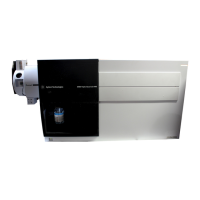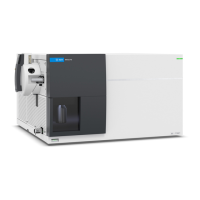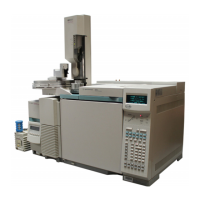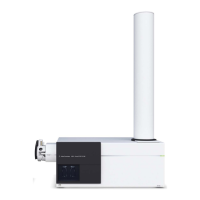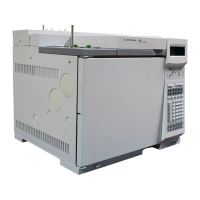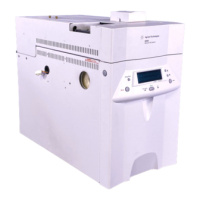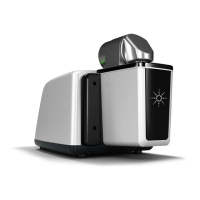28 Agilent 6400 Series Triple Quad LC/MS Concepts Guide
2 Inner Workings – Triple Quadrupole MS versus Single Quadrupole MS
How a triple quadrupole mass spectrometer works
Figure 12 Conceptual model of a triple quadrupole mass spectrometer:
With SIM, MS1 (Q1) and MS2 (Q3) are set at a single m/z,
while with Full Scan MS/MS, MS1 (Q1) is set at a single m/z
and MS2 (Q3) is scanned.
Representing the quadrupole mass analyzers as moving belts,
a collision cell can be placed between the belts to fragment the
ions. The first belt can be fixed to select which precursor ion
travels to the collision cell. Different types of collision cells can
be used.
The collision cell can be another quadrupole, a hexapole (six
rods like the one used in the Agilent 6400 Series Triple
Quadrupole LC/MS), an octopole (eight rods), or even a
transverse wave guide.
Whichever geometry is used, a collision gas is required—an
inert, non-reactive gas such as nitrogen or argon. Nitrogen is
used here. In addition, the voltages applied to the collision cell
must be different from those applied to the quadrupoles to
enhance the movement of all of the product ions toward the
third quadrupole.

